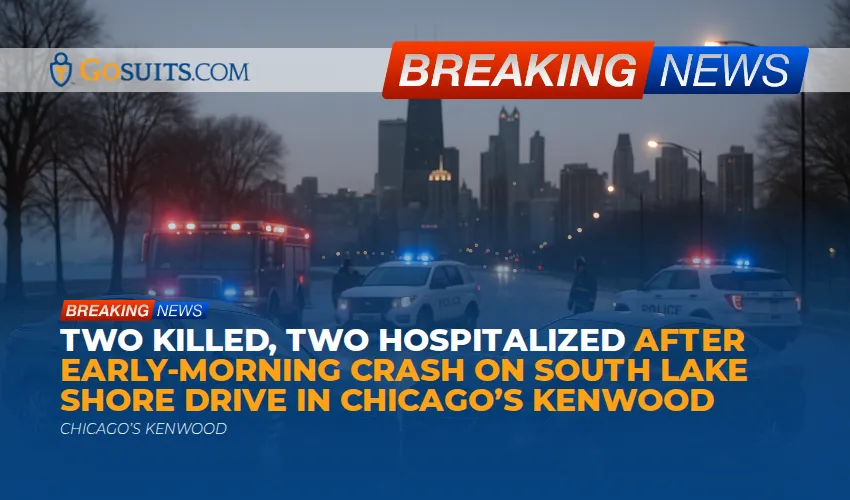- What is a life care plan in Los Angeles injury cases, and why does it matter?
- When can you recover future medical expenses in California courts?
- How is a life care plan built step by step for LA County cases?
- What data sources support medical cost projections in Los Angeles?
- How is the present value of future costs calculated from a life care plan?
- How do California rules impact evidence of medical bills and future costs?
- How do loss of earning capacity and vocational rehabilitation fit into a life care plan?
- How are non-economic damages evaluated alongside a life care plan?
- How do wrongful death and survival actions use life care planning in LA cases?
- How do defendants challenge life care plans in Los Angeles courts?
- How do comparative fault and mitigation affect a life care plan’s value?
- How do structured settlements interact with a life care plan?
- How do federal, Texas, and Illinois approaches to future damages compare with California?
- What common pitfalls should you avoid when using a life care plan?
- How does GoSuits approach life care planning and valuation in Los Angeles?
- Resources
What is a life care plan in Los Angeles injury cases, and why does it matter?
A life care plan is a structured, medically grounded roadmap that projects the goods and services someone will need after a serious injury and the associated costs over their lifetime. In Los Angeles, CA, life care planning is often used in catastrophic injury cases like spinal cord injury or traumatic brain injury to support recovery of future medical expenses, rehabilitation, home modifications, in‑home attendant care, and related needs. The plan becomes a foundation for personal injury case valuation, informing both economic damages calculation and settlement strategy.
California law allows recovery of future damages that are reasonably certain to occur. The California Civil Code provides that damages may be awarded for detriment suffered and for detriment that is certain to result in the future, which is the legal basis for using life care plans in court for future medical expenses Los Angeles claims. See California Civil Code sections 3281 and 3283.
For plaintiffs, a well-supported plan helps quantify the present value of future costs with clarity. For defendants, careful review and testing of the methodology helps identify overstated or speculative items. Either way, courts in Los Angeles County expect reliable methods and data inputs that fit the facts of the case.
Local context matters. Life care plan valuation can vary across LA County communities such as Downtown LA, West LA, Santa Monica, Beverly Hills, Hollywood, Glendale, Pasadena, Long Beach, San Fernando Valley, Burbank, Culver City, Inglewood, and Torrance due to differences in provider pricing, availability of services, and housing conditions for home modifications and attendant care.

When can you recover future medical expenses in California courts?
California courts allow recovery of future medical expenses when there is substantial evidence that such expenses are reasonably certain to be incurred. Evidence typically includes treating physician opinions, rehabilitation recommendations, and detailed projections of frequency, unit cost, and duration for each item in the plan. California Civil Code 3283 recognizes future detriment.
California jury instructions also direct juries to award the reasonable value of necessary future medical care and to reduce future sums to present cash value. While the wording of jury instructions can vary over time, the Judicial Council of California’s Civil Jury Instructions (CACI) reflect the principles that future medicals must be reasonably certain and reduced to present value. See the Judicial Council’s civil jury instruction resource page at the California Courts website: courts.ca.gov.
Additionally, the admissibility of opinions that project future care needs is governed by California Evidence Code provisions on opinion testimony by persons with specialized knowledge and the California Supreme Court’s gatekeeping standard described below. Evidence Code section 801 addresses the admissibility of opinion testimony based on matter reasonably relied upon by such witnesses in forming opinions.
How is a life care plan built step by step for LA County cases?
A credible life care plan follows a consistent, transparent process. In Los Angeles personal injury cases, the following steps are common:
What core steps define a reliable life care planning process?
- Clinical foundation: Review medical records, imaging, surgery notes, PT/OT notes, neuropsychological testing, and treating provider recommendations to establish diagnosis, prognosis, complications, and restrictions.
- In‑person assessment: Conduct a functional evaluation at home or rehab facility to understand mobility, ADLs, cognitive and behavioral needs, equipment use, home layout, and caregiver capacity.
- Treating provider input: Confer with treating physicians, therapists, and case managers to confirm reasonable necessity, frequency, and duration of care items.
- Itemized needs: List each projected good/service, such as follow-up visits, medications, DME, wound care, injections, attendant care, transportation, home health, counseling, vocational rehabilitation, and home or vehicle modifications.
- Frequency and duration: Assign specific intervals (weekly, monthly, annually) and time horizons (short-term, mid-term, lifetime) tied to the individual’s prognosis.
- Local unit pricing: Collect verifiable prices from Los Angeles and surrounding markets, including Medicare fee schedules, private payer ranges, and provider quotes to reflect reasonable value in Los Angeles.
- Inflation assumptions: Separate general inflation from medical cost inflation and document the sources and indices used.
- Quality controls: Cross-check redundancies, confirm medical necessity, and document rationale for each entry to satisfy Evidence Code 801 and California’s reliability standard.
- Economic summary: Convert the schedule of future costs to present value using defensible discount rates and sensitivity analysis.
What special issues arise in catastrophic injury life care plans?
- Spinal cord injury: Anticipate recurrent UTIs, skin breakdown, pressure-relieving equipment, catheter supplies, home health, respiratory issues for higher-level injuries, and replacement cycles for wheelchairs and seating. For context, national data indicate that the need for attendant care and equipment replacement is ongoing and substantial after SCI; see the National Spinal Cord Injury Statistical Center at UAB (nscisc.uab.edu).
- Traumatic brain injury: Include neurorehabilitation, cognitive therapy, behavioral health, seizure management, case management, and safety supervision. The CDC reports large national burdens associated with TBI-related ED visits, hospitalizations, and deaths, highlighting the long-term needs associated with TBI (cdc.gov).
- Chronic pain and CRPS: Plan for medication management, interventional procedures, durable medical equipment, and careful monitoring to mitigate side effects and opioid risks.
How do LA neighborhoods influence plan design and costs?
Provider availability, travel times, and vendor pricing vary across Downtown LA, West LA, Santa Monica, Beverly Hills, Hollywood, Glendale, Pasadena, Long Beach, the San Fernando Valley, Burbank, Culver City, Inglewood, and Torrance. A plan should reflect where you live and where you will receive care, including realistic hourly rates for home health aides and market-consistent costs for home modifications in that community.
What data sources support medical cost projections in Los Angeles?
- Medicare Physician Fee Schedule: A national benchmark for allowable amounts and CPT code pricing. While not determinative of private charges, it anchors reasonableness and replacement cycles. See the CMS Physician Fee Schedule overview (cms.gov).
- Hospital and facility charges: Use California facility chargemasters and, where accessible, average allowed amounts. California’s Office of Statewide Health Planning data and AHRQ HCUP summaries help contextualize inpatient and ED costs (hcup-us.ahrq.gov).
- Local vendor quotes: For DME, home modifications, and transportation in LA County, obtain at least two competitive quotes to establish a reasonable range.
What sources support inflation and trend assumptions?
- Medical cost inflation: Bureau of Labor Statistics medical care CPI series documents historical and current medical inflation, which often differs from general CPI (bls.gov).
- Discount rates and safe yields: U.S. Treasury yields inform conservative discounting to present value (home.treasury.gov).
What sources support life expectancy and replacement cycles?
- Life tables: Use CDC or SSA life tables to estimate statistical life expectancy while accounting for injury-related reductions if supported by medical evidence. See CDC life table resources (cdc.gov) and SSA life tables (ssa.gov).
- Vocational and occupational references: O*NET and DOL resources describe job demands that inform work capacity analyses (onetonline.org).
How is the present value of future costs calculated from a life care plan?
Future costs must be discounted to a present cash equivalent. The process generally includes:
- Timeline and frequency: For each item, establish a schedule over the life expectancy or expected duration of need.
- Nominal vs. real dollars: Decide whether to project in nominal dollars with inflation or express amounts in today’s dollars and use a real discount rate.
- Discount rate selection: Choose a rate consistent with safe investments, often referencing U.S. Treasury securities, and explain why it fits the facts.
- Sensitivity analysis: Show how valuations change under different reasonable discount rates and medical inflation assumptions.
California juries are instructed to reduce future economic damages to present cash value to avoid overcompensation. For general present value principles in personal injury damages, see the U.S. Supreme Court’s discussion in Jones & Laughlin Steel Corp. v. Pfeifer, 462 U.S. 523 (1983), available at law.cornell.edu. Although Pfeifer addressed federal maritime law, the economic logic of discounting future streams is widely applied, and California jury instructions reflect the same concept in civil cases.
How do California rules impact evidence of medical bills and future costs?
California’s Supreme Court held that a plaintiff may recover no more than the amounts actually paid or incurred for past medical services, not the higher amounts billed but unpaid. See Howell v. Hamilton Meats, 52 Cal. 4th 541 (2011), available at CourtListener. This rule shapes the way past medicals are presented and can influence how juries think about medical costs generally.
What rules govern future medical expenses in California?
For future medicals, California courts have restricted the use of undiscounted billed amounts and require proper evidentiary foundations for rate assumptions. In Corenbaum v. Lampkin, the court held that amounts billed for past medical services are not themselves evidence of the reasonable value of future medical services and that testimony projecting future costs must rely on appropriate data. See Corenbaum v. Lampkin, 215 Cal. App. 4th 1308 (2013), available at CourtListener.
How does California’s reliability standard affect testimony?
California trial judges act as gatekeepers for the reliability of opinion testimony. In Sargon Enterprises, Inc. v. University of Southern California, the California Supreme Court emphasized that opinions must be based on matter of a type reasonably relied upon and must not be speculative. See Sargon Enterprises, Inc. v. University of Southern California, 55 Cal. 4th 747 (2012), available at CourtListener. Together with Evidence Code 801, Sargon guides how courts evaluate the foundation and methods behind life care plans in Los Angeles County courts.
How do loss of earning capacity and vocational rehabilitation fit into a life care plan?
A complete personal injury case valuation in Los Angeles often combines life care planning with an analysis of lost earning capacity and vocational rehabilitation. These components are related but distinct.
How is loss of earning capacity measured?
- Pre‑injury baseline: Document education, credentials, employment history, earnings trajectory, and fringe benefits.
- Post‑injury limitations: Use medical restrictions and functional evaluations to determine feasible work options.
- Labor market data: Apply Los Angeles Metropolitan Statistical Area wage and employment data to viable occupations; use BLS and O*NET for wage rates and physical/cognitive job demands (bls.gov, onetonline.org).
- Worklife expectancy: Adjust for reduced participation and retirement age assumptions supported by data.
- Present value: Discount future earnings streams to present value and perform sensitivity tests for growth and discount rates.

How does vocational rehabilitation contribute?
- Transferable skills analysis: Identify occupations consistent with restrictions and training.
- Training and accommodation: Plan for retraining, certifications, and assistive technology to re‑enter the LA workforce.
- Job placement prospects: Consider hiring patterns and commute realities across LA County, including Downtown LA, Westside, and South Bay.
How are non-economic damages evaluated alongside a life care plan?
Non-economic damages compensate for human losses such as pain, suffering, inconvenience, and loss of enjoyment of life. Although a life care plan focuses on economic items, its clinical detail often helps juries and mediators understand the day-to-day impact of injuries, which can inform noneconomic damages. California law allows recovery of noneconomic damages in personal injury actions, but they are not calculated with a formula. Juries weigh the evidence and arrive at a reasonable amount under the court’s instructions. See the California Civil Code general damages framework at section 3281.
How do wrongful death and survival actions use life care planning in LA cases?
In California, heirs may bring a wrongful death action under Code of Civil Procedure section 377.60. The measure of damages, set by section 377.61, includes economic support the decedent would have provided and noneconomic damages such as loss of love, companionship, comfort, care, assistance, protection, affection, society, and moral support. Life care plans per se are not typical in wrongful death because the injured person has passed, but economic analyses of support and household services often parallel life care methodologies in their reliance on life expectancy, productivity, and replacement service costs.
What is a survival action, and how does it differ?
A survival action allows the decedent’s estate to recover damages the decedent could have recovered had they lived, subject to statutory limits. California Code of Civil Procedure section 377.34 governs survival damages. Current law allows recovery of certain damages, and the statute should be consulted for the latest scope. Life care planning concepts may inform pre‑death medical expenses and care needs in survival claims where the decedent lived for a period after the injury.
How do defendants challenge life care plans in Los Angeles courts?
Defense teams frequently test assumptions and methods, focusing on reliability under Sargon and Evidence Code 801. Common challenges include:
- Medical necessity: Arguing a service is not reasonably certain or medically necessary given the clinical record.
- Frequency/duration: Proposing lower frequency, shorter durations, or elimination of redundant items.
- Unit pricing: Substituting lower, but still reasonable, LA market rates, Medicare-based benchmarks, or preferred provider rates.
- Replacement cycles: Extending replacement intervals for DME and home modifications beyond what is claimed.
- Inflation/discount: Using different medical inflation or discount rate assumptions to lower present value.
- Collateral source considerations: Requesting that rate assumptions reflect reasonable value rather than high-charge list prices, consistent with California evidentiary limits in Corenbaum.
Courts will generally admit opinions that rest on a transparent and reliable foundation, while excluding speculation. A detailed, data-driven plan reduces attack points.
How do comparative fault and mitigation affect a life care plan’s value?
California follows pure comparative fault. If a plaintiff shares responsibility for the incident, economic and noneconomic damages are reduced by the plaintiff’s percentage of fault. In practice, an otherwise robust life care plan may be taken as proven, and the verdict is then reduced by the comparative fault percentage. Separate from fault, plaintiffs have a duty to mitigate damages by acting reasonably to obtain treatment and follow medical advice. Unexplained noncompliance can lead to reductions in certain components, such as prolonged acute care or avoidable complications. Careful documentation of treatment adherence in Los Angeles improves the credibility of the plan.
How do structured settlements interact with a life care plan?
Structured settlements use annuities to fund future care streams. A life care plan provides the payment schedule that a structure can match, often with level or increasing payments aligned to medical inflation assumptions. Structures may protect against outliving a lump sum and can be tax‑advantaged under federal law in many personal injury settings. Financing a portion of the plan with U.S. Treasury-based annuities can align with conservative discount assumptions used to compute present value, though market availability and rates vary over time.
What common pitfalls should you avoid when using a life care plan?

- Overreliance on list prices: California decisions disfavor using undiscounted billed charges as stand‑alone evidence of future costs. Use LA market rates and credible benchmarks.
- Missing medical foundation: Every item should tie back to diagnosis and treating provider recommendations, not just general guidelines.
- Ignoring local availability: Plan for providers and vendors who actually serve neighborhoods like Hollywood, Glendale, Pasadena, or Long Beach, accounting for realistic travel and wait times.
- Omitting replacement cycles: Wheelchairs, cushions, and lifts have predictable life spans. Document cycles with vendor data and maintenance needs.
- Unclear inflation and discount assumptions: Disclose sources for medical inflation and the reasoning behind discount rates, and present sensitivity ranges.
- Not coordinating with vocational analysis: Economic damages for lost earning capacity should align with functional limitations described in the plan.
- No mitigation discussion: Address adherence to treatment and any barriers (transportation, caregiver support) to show reasonableness.
How does GoSuits approach life care planning and valuation in Los Angeles?
If you or a loved one suffered a serious injury in Los Angeles, a clear, data‑driven plan for future care and costs can make a real difference. Speaking with a Los Angeles personal injury lawyer can help you understand how life care planning fits with your specific medical needs, insurance issues, and the courts where your case will be heard. GoSuits handles personal injury matters across Los Angeles, CA and surrounding communities, including Downtown LA, West LA, Santa Monica, Beverly Hills, Hollywood, Glendale, Pasadena, Long Beach, the San Fernando Valley, Burbank, Culver City, Inglewood, and Torrance.
We use a technology‑driven approach from intake through trial preparation. GoSuits has exclusive proprietary software that helps organize medical records, translate treatment plans into itemized future care schedules, and run real‑time valuation scenarios with market‑based pricing. This tool speeds up case work and supports clearer negotiations and litigation presentations. Even though we leverage technology to move faster, every client works directly with a designated attorney. We do not route clients to case managers, and you have unfettered access to your lawyer for strategy, updates, and preparation.
Our team brings 30 years of combined experience in civil litigation, including trials in Los Angeles County. Trial readiness matters because it improves the quality of investigation, the credibility of damage models, and positioning at mediation. We have recovered meaningful results for clients in complex injury cases and maintain a record of past matters here: gosuits.com/prior-cases. Past results do not guarantee outcomes, but they reflect the work and preparation we bring to each case.
Practice areas include motor vehicle collisions, pedestrian and bicycle incidents, premises liability, products liability, and wrongful death. We coordinate closely with rehabilitation providers and economic analysts to build support for future medical expenses Los Angeles claims, life care plan valuation, loss of earning capacity, and full personal injury case valuation. We are available to speak with you in plain language about timelines, next steps, and how to move your matter forward without delay.
Resources
- California Civil Code section 3281 (general damages): leginfo.legislature.ca.gov
- California Civil Code section 3283 (future damages): leginfo.legislature.ca.gov
- California Code of Civil Procedure section 377.60 (wrongful death): leginfo.legislature.ca.gov
- California Code of Civil Procedure section 377.61 (measure of wrongful death damages): leginfo.legislature.ca.gov
- California Code of Civil Procedure section 377.34 (survival damages): leginfo.legislature.ca.gov
- California Evidence Code section 801 (opinion testimony): leginfo.legislature.ca.gov
- Sargon Enterprises, Inc. v. University of Southern California, 55 Cal. 4th 747 (2012): courtlistener.com
- Howell v. Hamilton Meats & Provisions, Inc., 52 Cal. 4th 541 (2011): courtlistener.com
- Corenbaum v. Lampkin, 215 Cal. App. 4th 1308 (2013): courtlistener.com
- Jones & Laughlin Steel Corp. v. Pfeifer, 462 U.S. 523 (1983): law.cornell.edu
- Centers for Disease Control and Prevention, TBI data: cdc.gov
- National Spinal Cord Injury Statistical Center (UAB): nscisc.uab.edu
- Centers for Medicare & Medicaid Services, Physician Fee Schedule: cms.gov
- Agency for Healthcare Research and Quality, HCUP: hcup-us.ahrq.gov
- Bureau of Labor Statistics, Consumer Price Index (including medical care CPI): bls.gov
- U.S. Treasury yield curve rates: home.treasury.gov
- CDC life table resources: cdc.gov
- Social Security Administration life tables: ssa.gov
- O*NET Online, occupational information: onetonline.org
- Texas Civil Practice & Remedies Code section 41.0105: statutes.capitol.texas.gov
- U.S. Courts, general federal resources: uscourts.gov
- Los Angeles County QuickFacts (population context): census.gov
Frequently asked local questions
How long does a life care plan take to prepare in Los Angeles?
It varies with injury complexity and record volume. For severe injuries, compiling records, conducting assessments, interviewing treating providers, and sourcing local pricing can take several weeks to a few months. Early planning supports better treatment coordination and case valuation.

Can a life care plan be updated before mediation or trial?
Yes. Plans are often updated as new surgeries, complications, or therapies occur. Updates should be dated, tracked, and explained, with changes grounded in clinical developments and new pricing data.
Will insurance or Medicare rates be considered in the plan?
Courts look for reasonable value evidence. Rate assumptions often consider Medicare schedules, LA private payer data, and provider quotes. The method should be transparent and consistent with California evidentiary rules.
Is a plan only for catastrophic injuries?
No. Even moderate injuries can benefit from structured projections for therapy, imaging, medications, and lost time from work. The scope should match the injury.
What if my care is split between Santa Monica and Downtown LA?
Plans can blend costs from multiple service areas. The key is documenting why each location is used and applying the relevant local rates for each provider or vendor.






